The 3 kW programmable AC electronic load features a user-friendly interface with a 7-inch capacitive touchscreen, and its automatic compensation function maintains optimal performance by adjusting parameters in real time to ensure accurate readings and reliable results.
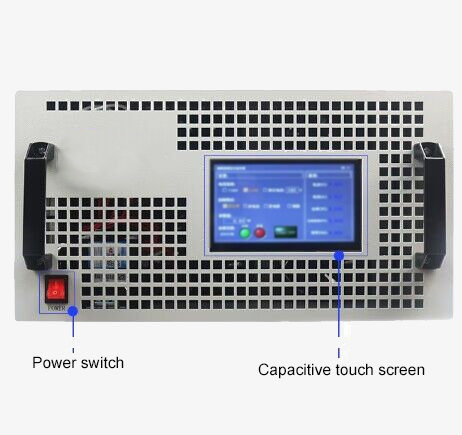
- 4 Operating Modes: The programmable AC electronic load supports four distinct operating modes: constant power, constant current, constant resistance, and short circuit.
- Four-Digit Precision Display: The programmable AC electronic load tester is equipped with a high-resolution four-digit display, ensuring precise and accurate readings.
- 7-Inch Capacitive Touchscreen: It features a 7-inch capacitive touchscreen that allows for easy and intuitive operation.
- Automatic Compensation Function: The AC electronic load device includes an automatic compensation function that adjusts settings in real-time to maintain stable operation.
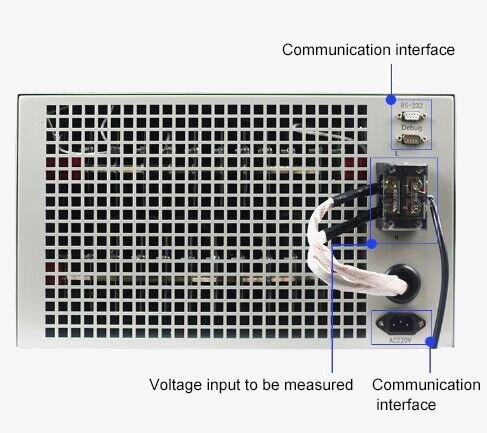
- Intelligent Temperature-Controlled Fan: An intelligent temperature-controlled fan automatically adjusts its speed based on the load's temperature, providing efficient cooling and reducing noise for optimal performance and longevity.
- Multiple Protection Features: The programmable ac electronic load simulator incorporates multiple protection features, including overvoltage, overcurrent, overpower, and overtemperature protection.
- RS-232 Interface: SISCO 3 kW programmable AC electronic load comes with an RS-232 interface for easy communication with external devices and systems, allowing for remote control, data logging, and integration into automated test setups.
Applications
SISCO Electronic Loads are primarily used to test and evaluate power supply devices' performance and stability. They are widely used in power supply design, production testing, quality control, and research and development, simulating real load conditions to verify the reliability and efficiency of power products.
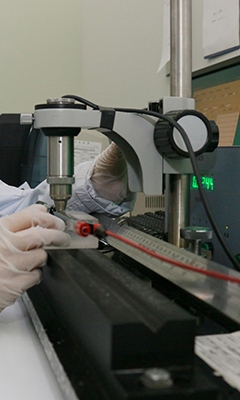
Production Test

R&D
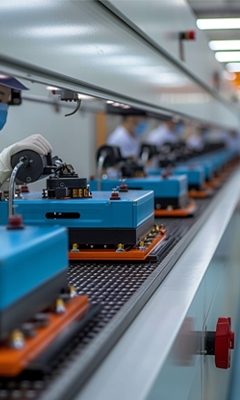
Quality Control
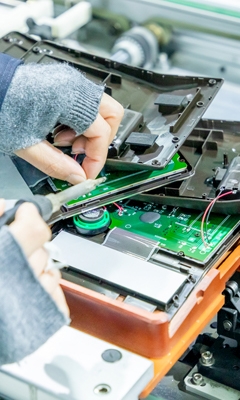
Power Design
| Model | SISCO-AEL-3000 | |
| Working Power | Input Voltage | AC220V±10%,50Hz |
| Rated Power | 60W | |
| Communication | RS232 | Baud rate 9600 |
| Load Function | Input Voltage | AC80~240V, rated AC110V/AC220V |
| Input Frequency | 50Hz/60Hz | |
| Rated Power | 3000W | |
| Rated Current | 27A@105~ 135V, 13. 6A@215~ 240V | |
| Power Setting Accuracy | 20W | |
| Current Setting Accuracy | 0.09A | |
| Load Return Actual Accuracy | -3% +1.5% or ±20W | |
| Resistance Setting Range and Accuracy | 4.1~ 6000@110V, 14~2400Ω@220V,±5% | |
| Power Factor | PF=1.0 | |
| Heat Dissipation Method | Air cooling | |
| Other Functions | Unloading/short circuit | |
| Measurement and Error | Voltage | ±(0.1% of reading + 0.2% of range) |
| Current | ±(0.1% of reading + 0.1% of range) | |
| Active Power | ±(0.1% of reading + 0.1% of range) | |
| Frequency | ±0.1% | |
| Power Factor | ±0.02 | |
| Protective Function | Overvoltage | √ |
| Overpower | √ | |
| Overtemperature | √ | |
| Working Environment | Temperature | 0~40℃ |
| Humidity | ≤85%RH | |
| Atmospheric Pressure | 86~ 106kPa (4000 meters above sea level and below) | |
| Dimension | 481.8mm x 180mm x 568mm | |
| Weight | 21.5kg | |
Dimension
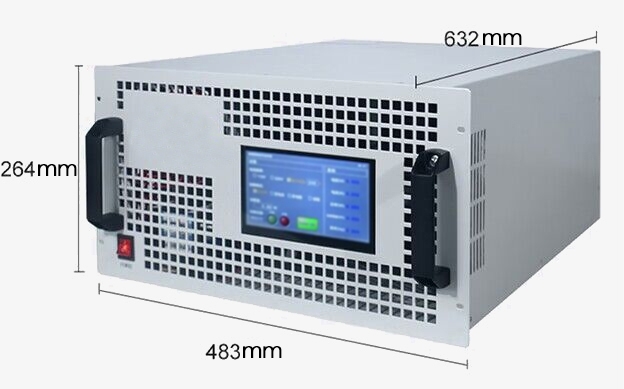
Thank you for buying industrial test and measurement equipment on SISCO.com, all products sold by SISCO and the partner cover a 12 months warranty, effective from the date of receiving the products.
What is covered?
SISCO is responsible for providing free spare parts, and free technical support to assist the customer to repair the defective products until the problem is solved.
What is not covered?
- Product purchased from anyone other than a SISCO store or a SISCO authorized reseller.
- Expendable parts.
- Routine cleaning or normal cosmetic and mechanical wear.
- Damage from misuse, abuse or neglect.
- Damage from use of parts other than SISCO approved.
- Damage from use outside the product’s usage or storage parameters.
- Damage from use of parts not sold by SISCO.
- Damage from modification or incorporation into other products.
- Damage from repair or replacement of warranted parts by a service provider other than a SISCO authorized service provider.
- Damage caused by the application environment not meeting the product usage requirements and the failure to perform preventive maintenance.
Q1: What is adjustable electronic load?
A1: An adjustable electronic load is a versatile testing device used to simulate various load conditions on power sources by allowing users to configure the load parameters to meet specific testing requirements. This flexibility makes it a valuable tool for evaluating the performance and reliability of power supplies, batteries, and other electronic devices.
Q2: How does an electronic load work?
A2: An electronic load works by simulating a real-world load on a power source, such as a battery or power supply, to test its performance and behavior under various conditions. It achieves this by dynamically adjusting its internal resistance to maintain a set current, voltage, resistance, or power level, depending on the selected operating mode (Constant Current, Constant Voltage, Constant Resistance, or Constant Power). The electronic load can accurately control and measure the input parameters, providing valuable data on the power source's capabilities, efficiency, and stability under different load scenarios.
Q3: What is an electronic load used for?
A3: An electronic load is used to test and evaluate the performance of power sources such as power supplies, batteries, and solar panels. It simulates various load conditions by drawing controlled amounts of current or power, allowing engineers to assess the reliability, efficiency, and behavior of the power source under different operating conditions. Electronic loads are essential in research and development, quality assurance, and production testing, helping ensure that power devices meet specified performance standards and can handle real-world usage scenarios.
Tips: What types of testing can the 3kW programmable electronic load perform?
The 3kW programmable electronic load is designed to accommodate a variety of testing applications, making it suitable for diverse scenarios:
- Battery Testing: Evaluate battery capacity, discharge rates, and cycle life by simulating real-world conditions and monitoring performance.
- Power Supply Testing: Analyze the efficiency and stability of power supplies under varying loads to ensure reliable operation and optimal performance.
- Inverter Testing: Test inverters by applying different load profiles to simulate real-world usage and verify their response to dynamic changes.
- Component Testing: Assess the behavior and durability of electronic components, such as resistors and diodes, by subjecting them to controlled load conditions.
- Renewable Energy Systems: Test solar panels and wind turbines by simulating different environmental conditions to evaluate their efficiency and output.
- R&D and Production Testing: Support research and development efforts and streamline production testing processes by providing precise, repeatable load conditions.

